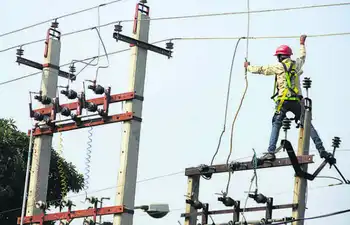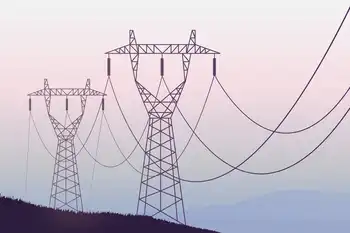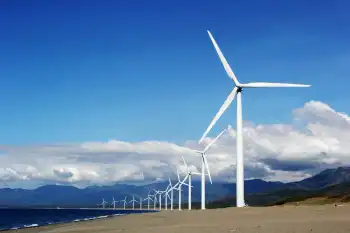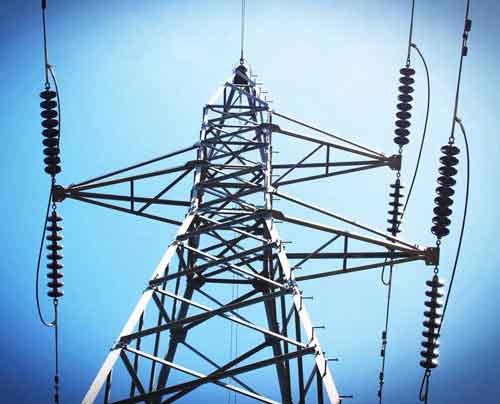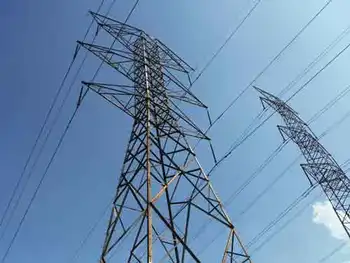Expensive job killer; or green and cost competitive?
By Amory B. Lovins, Michael Trebilcock, Financial Post
Substation Relay Protection Training
Our customized live online or in‑person group training can be delivered to your staff at your location.

- Live Online
- 12 hours Instructor-led
- Group Training Available
Professor Michael TrebilcockÂ’s response to S.L. PedersenÂ’s devastatingly accurate demolition of his anti-wind-power article ignores the first rule of holes: When youÂ’re in one, stop digging.
The issue is not whether Prof. Trebilcock is entitled to quote three Danes who oppose wind power, but that he inflated their credibility by misrepresenting their affiliations. Unfortunately, Prof. TrebilcockÂ’s scholarship only gets sloppier from there.
He claims Danish carbon dioxide emissions rose “by 36% in 2006 alone,” but the actual rise in 2006 (a bad wind year) was 15.9%, to about the 2003 level, and was cut to 2.8% by the official adjustment for electricity trade. Wind power displaces, not increases, coal usage, and thus has contributed significantly to Denmark’s 0.3% absolute or 13.3% adjusted decrease in absolute carbon-dioxide emissions during 1990-2007, with emissions from coal burning dropping 23.4% (41.2% adjusted), a very important coal displacement that contradicts Prof. Trebilcock’s thesis.
Even if wind machines produced only 25% of their full-time full-power output as he claims (recent U.S. wind farms average 33%-35%, one-sixth beat 40%, and the best do 49%), those installed in 2007 fetched (US)$0.045 for each kilowatt hour, net of a production tax credit whose levellized value is (US)$0.01/kWh, so they beat most wholesale power prices. The UK Royal Academy of Engineering’s undocumented 2004 cost comparison was thus embarrassingly wrong, partly because it wrongly assumed 100% backup: New U.S. wind power, “firmed” so it’s always available whether or not the wind is blowing, actually sells for about half the price of electricity from a new coal plant or one-third that from a new nuclear plant.
Although central thermal plants do usually run more of the time than wind turbines, their failures are far less graceful: In a few milliseconds, without warning, they can lose a thousand megawatts for weeks, months, or even years. Wind farms’ downtime in calm periods is smaller, briefer and far more predictable than the approximately 10%-12% downtime (including approximately 3%-5% of wholly unexpected “forced” outages) of central thermal plants. The cost of backing up both types of generators is broadly comparable, empirically adding only a few percent to wind power’s total cost, even if wind power provided 20% to 30% or more of total electricity. Much practical experience and more than 200 international studies, without exception, confirm this.
Prof. Trebilcock says itÂ’s fair to call Danish residential electricity prices exorbitant because all his European comparables include taxes too. Perhaps heÂ’s unaware that Danish taxes are exceptionally high, totaling over half the residential tariff. ThatÂ’s why Pedersen reasonably compared industrial tariffs instead. Moreover, Danish electricity prices in 2004-07 would have been 4%-12% higher but for wind powerÂ’s presence on the grid, as explained in the European Wind Energy AssociationÂ’s rigorous March, 2009, studies on wind powerÂ’s economics and integration (available at www.ewea.org).
ThereÂ’s plenty of room for informed debate about OntarioÂ’s electricity alternatives, but Ontarians deserve real facts, not made-up ones.
An Expensive Job Killer – By Michael Trebilcock
In response to Mr. LovinsÂ’ comments, let me pose the following questions:
1. If electricity generated by wind power is competitive with other forms of electricity generation, why does it require such large subsidies? In 2008, the U.S. Energy Information Administration reported the following relative subsidies, on a dollar-per-megawatt-hour basis, for 2007: natural gas at 25¢, coal at 44¢, hydro at 67¢, nuclear at $1.59 — and wind at $23.37. And why is the proposed feed-in tariff for wind power in Ontario ($13.5 per kilowatt hour) and related costs at least twice the prevailing price for electricity in the province? If wind power is competitive, why doesn’t the wind industry renounce all subsidies?
2. If wind power has had such a dramatic impact on carbon emissions in Denmark, why is it that European Environment Agency data show that carbon emissions in Denmark have been essentially flat over the period 1990-2007 (with some year-to-year variation), while wind production has increased dramatically over this period? Why “adjust” these emission figures downwards to reflect electricity exports (sold at a substantial loss) when these are displacing carbon-free hydro and nuclear power in neighbouring countries?
3. Given the meagre and intermittent electricity output from wind turbines, how can it possibly displace most conventional sources of power? In his recent book, Sustainable Energy — Without the Hot Air (UIT), reviewed by The Economist magazine, David Mackay’s estimates imply that to replace 90% of existing electricity generation in the UK with wind power, the entire country would have to be blanketed with wind turbines. Even if wind turbines can displace some conventional sources of electricity, what is gained by this when, as in Ontario, 75% of current generation output is already carbon-free and when hydro-abundant provinces could substantially increase clean electricity exports to the United States (displacing dirty electricity there) if domestic electricity were priced at its opportunity costs (with rebates to low-income consumers)?
4. How credible are claims that wind power can create significant new “green” jobs, when either higher production costs to electricity-intensive industries, or higher subsidies and hence tax burdens, are likely to kill far more jobs?
Here are my predictions:
1. The expansion of wind power in Ontario will significantly increase overall electricity costs;
2. Wind power will have no significant impact on carbon emissions in the province;
3. Wind power will create no net new employment in the province but will kill jobs through higher electricity costs.
I assume that Mr. Lovins makes the opposite predictions. Let us revisit these issues several years from now in the light of the empirical evidence (rather than mere conjecture) and see who is right. I am confident that my scholarly reputation, which Mr. Lovins believes is in jeopardy, will survive this test unblemished. In this respect, I am in distinguished company. In The Vanishing Face of Gaia: A Final Warning (Allen Lane), James Lovelock, one of the world’s most distinguished Earth scientists, writes that “Europe’s massive use of wind as a supplement to base-load electricity will probably be remembered as one of the great follies of the 21st century” — probably along with ethanol (which the Ontario government has also chosen to subsidize heavily despite high costs and negative environmental impacts).
To reiterate a fundamental point that I have made repeatedly: With well-designed carbon taxes or cap-and-trade systems that make polluters pay, and better regional integration of electricity markets, it will not matter what I, Mr. Lovins, the Danish Embassy or any political energy czar thinks, because these decisions will be made by hundreds of millions of consumers and producers in the face of socially efficient incentives. Competition for the most technologically efficient solution to the problem of greenhouse-gas emissions will replace corporate rent-seeking, environmental theology and political hubris in betting the bank on fancied technological “winners.”





